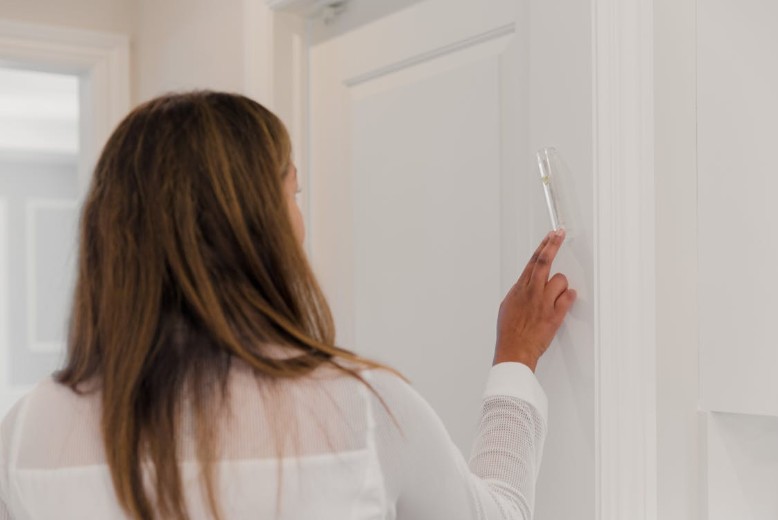There’s a certain beauty in homes that have already lived a few lifetimes. They carry warmth, depth, and personality, details that can’t be duplicated in new builds. Subtle efficiency upgrades now define how homeowners refresh their spaces, that is, practical updates that improve comfort and performance while keeping the home’s original spirit intact.
In Batesburg, SC, this approach feels especially relevant. The town’s heritage homes and tree-lined streets invite preservation, not replacement. Many homeowners here are finding ways to stay comfortable in changing weather without disturbing the craftsmanship that gives these houses their identity.
Updating Main Comfort Systems
The heartbeat of a classic home lives inside its mechanical rooms and hidden chases. Heating, cooling, and ventilation shape how each room feels, how evenly temperatures hold, and how quietly the house runs from morning to night. Yes, we’re talking about HVAC.
Aging equipment drifts from calibration, ducts lose balance, and motors grow loud. A thoughtful reset restores calm operation: right-sized equipment, corrected airflow paths, sealed connections, and proper return placement. Commissioning, that is, verifying refrigerant charge, static pressure, and thermostat staging, locks in smooth performance.
For a clean upgrade path, many homeowners schedule HVAC installation in Batesburg, SC, with experienced professionals. A good team handles load calculations, selects equipment that suits the home’s real demands, designs ductwork to match room-by-room needs, and tests every setting before handoff. The payoff shows up as even temperatures, quiet cycles, and lower utility swings, all while the rooms look exactly like you want them to look.
Sealing Drafts Without Altering Architectural Details
Air leaks steal comfort quietly. They slip in at sash cords, settle around casings, and whisper through attic hatches. Draft control begins with a careful walk-through and a simple map: window perimeters, door thresholds, baseboards, attic penetrations, rim joists, and chimney surrounds. Low-profile weatherstripping under a door sweep, thin bead caulk color-matched to trim, rope caulk at seasonal windows, and gaskets behind switch plates can tighten the envelope without touching the millwork’s character.
Attic and crawlspace attention pays steady dividends. Foam boxes over recessed lights rated for insulation contact, sealed duct boots, mastic on joints, and a continuous air barrier at the attic plane all cut infiltration. Each small fix is almost invisible. Together, they create consistent rooms that feel settled and quiet.
Incorporating Subtle Solar Solutions
Renewable energy can sit gently within traditional architecture. Not every solar approach announces itself. Thoughtful placements, like rear-facing roof planes, low-profile modules behind a parapet line, or a compact ground array screened by shrubs, support generation without crowding the façade. Solar pre-wire from the main panel to the roof deck (or ground pad) keeps the option open for later expansion.
Battery storage adds resilience during summer storms and grid hiccups. A slim wall-mounted unit in a utility space pairs with a modest array for essential circuits: refrigeration, network, lighting, and air handler. The roofline stays clean, the streetscape stays familiar, and the home gains quiet independence during outages.
Eco-Friendly Materials That Fit the House
Material updates can protect health, lift efficiency, and keep the interior’s personality intact. Low-VOC paints and finishes calm indoor air. Cellulose or mineral-wool insulation adds density for sound and temperature control. Limewash over tired plaster lets walls breathe while refreshing tone and texture. Reclaimed oak or heart-pine patch boards repair worn spots in old floors without a visual mismatch.
Tile selections with recycled content, natural fiber rugs, and solid-wood cabinetry with formaldehyde-free cores carry the same ethos. The house reads as itself, same lines, same touch, only steadier, cleaner, and easier to maintain. Maintenance cycles stretch, rooms feel grounded, and upgrades fade into the background like they were always meant to be there.
Adding Quiet Climate Zoning
Classic layouts often run uneven: sun-washed front rooms, tucked-away back bedrooms, upstairs spaces that drift warm. Zoning organizes comfort by how the house is actually used. A two- or three-zone strategy, controlled by smart thermostats, gives each area its own target temperature and schedule. Dampers modulate airflow softly, so equipment doesn’t race or roar during peak hours.
Homes without full-height chases can still gain zoning benefits through ductless or slim-duct air handlers placed discreetly: a compact cassette tucked above a closet door, a short-run concealed unit in a hallway soffit, or a low-wall console in a rarely used den. The result is calm, steady rooms, fewer hot-cold swings, and shorter runtime windows.
Using Low-E Paints and Finishes
Paint can contribute to comfort as much as insulation. Low-emissivity coatings reflect radiant heat instead of absorbing it, helping interiors stay cooler in summer and retain warmth in winter. Such products look and apply like traditional paint, yet add a thin thermal shield to walls and ceilings. A matte or satin finish hides imperfections while keeping light soft and even across the room.
On trim and cabinetry, water-based polyurethane or natural-oil finishes seal wood without releasing strong odors or heavy compounds. Each surface gains durability and subtle sheen while maintaining indoor air quality.
Hiding Smart Sensors and Panels
Technology fits best when it disappears into the design. Smart thermostats, occupancy sensors, and control hubs can recess into millwork, sit behind hinged panels, or share wall space with existing switch plates. When placed thoughtfully, they manage comfort and security without adding visual clutter.
For larger integrations, like energy monitors, load controllers, or home-automation panels, utility closets or under-stair cabinets keep wiring tidy and accessible. Concealment keeps historic interiors calm while allowing modern precision to operate freely.
Updating Exterior Insulation
True efficiency depends on a strong envelope. Exterior insulation upgrades create a buffer against temperature swings, moisture, and noise. Rigid foam or mineral-wool boards can be mounted behind existing siding, then finished with new cladding that matches the home’s proportions and color.
In attics and crawlspaces, spray-applied or blown-in insulation closes air gaps that older materials leave open. Vapor-permeable membranes let the structure breathe, protecting wood framing from trapped humidity.
Future-Proofing Classic Architecture
Adaptability keeps a home relevant. Adding spare conduit runs, network cabling, and flexible electrical panels prepares the house for the coming decades of technology. Plumbing manifolds and access points simplify future fixture updates. Hidden chaseways allow easy sensor or solar expansion when needed.
This forward-thinking work never shows, yet it defines longevity. When the structure can accept upgrades without demolition, maintenance stays simple and the home continues its quiet evolution. Modern systems integrate smoothly, leaving the craftsmanship and proportion that make the building unique untouched.
The best updates move silently, strengthening the framework of older homes while honoring their identity. Each improvement adds comfort, steadiness, and resilience without erasing history.




